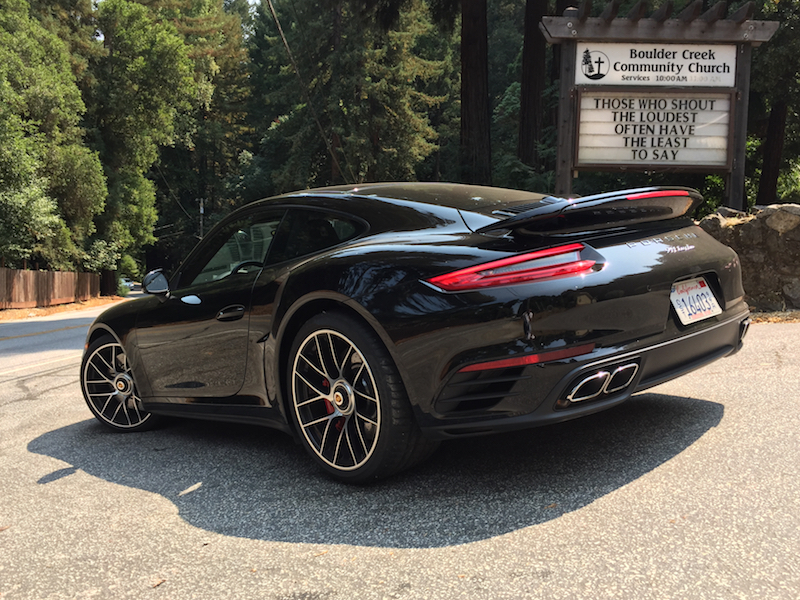
130 MPH. So said the digital speedometer in a 996 GT2 as I braked for Turn 1 at Thunderhill Raceway in early 2002. Pro driver Johannes van Overbeek, on hand to set lap times during that test for Excellence magazine, was getting off the last turn harder and braking later on his way into T1. In doing so, he was seeing 135 mph.
Today, a 2017 911 Turbo S is registering 142 mph as I get on the brakes for the same turn—with an automatic gearbox and air-conditioned seats. Onward.
Some within Weissach believe the 911 Turbo is the best sports car in the world. Besides their obvious bias, it’s easy to see why, given the Porsche’s incredible performance, all-weather capability, and luxury-sedan comfort. Even so, the 911 Turbo fell off of many U.S. enthusiasts’ radar about the time that the track-oriented 996 GT3 arrived. Suddenly, there was a purer, sharper tool for those seeking the ultimate 911 experience. The arrival of a softer, 997-based 911 Turbo in 2006 didn’t help matters. Subsequent Turbos offered remarkable performance, but their flat six soundtrack was subdued, their steering lacked feel, and their bulk was hard to hide. For those who valued finesse and feedback, a Carrera or a GT3 offered a more rewarding experience.
Porsche listened—and offered us some serious seat time in its new, 991.2-based 911 Turbo and 911 Turbo S. Our first day would include four 20-minutes sessions at Northern California’s Thunderhill Raceway in searing 103° F heat, and would be followed by 1,000 miles of grand touring. Here’s what we learned, and why:
The 911 Turbo is Back!
1. It’s about more than speed.
The last three 911 Turbos—based on the 997-1, 997-2, and 991-1 platforms—offered crushing acceleration. This one is even faster! Porsche, which is known for its conservative performance figures, says the 2017 911 Turbo can do 0-60 mph in 2.9 seconds and hit 198 mph . The Turbo S shaves a tenth and exceeds 200. Both feel at least that fast. What makes them different from their predecessors is that they feel connected and keen. Down a good mountain road, the 911 Turbo is no longer a distant dance partner—you fall into a rhythm with it. Even better, you’re having fun.
2. Ever used a really good tool?
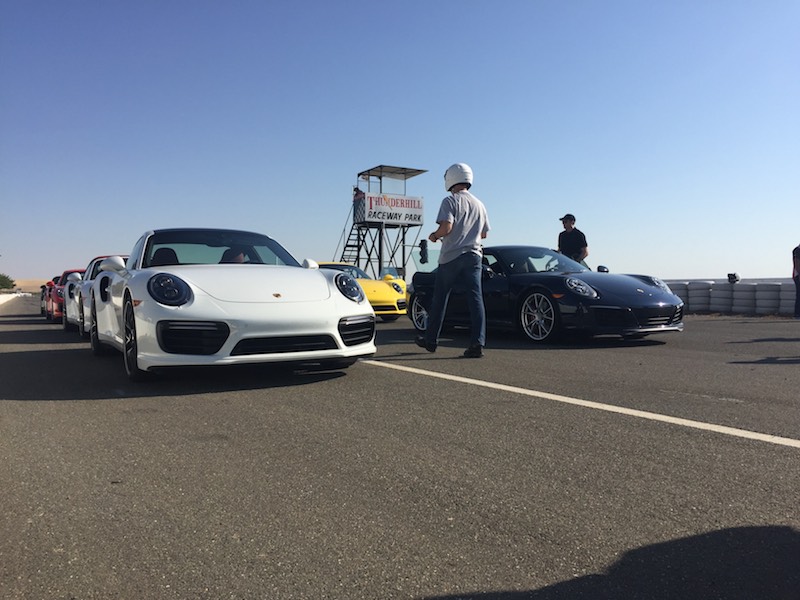
Where recent Turbos work, this one excels. At Thunderhill, the 991.2 Turbo doesn’t feel exceedingly soft in the way many street cars do. Thank the latest PASM adjustable dampers, which automatically firm when you select the Sport Plus setting. The Turbo’s ability to transfer all of its torque to the pavement yields an on-track pace that keeps you busy and smiling wide. One can only imagine the fun of hunting down something other than another 991.2 Turbo. On tiny mountain roads—the kind with no center-line, tight turns, and unexpected dips—the 991.2 Turbo keys into the pavement where a 991.1 Turbo feels wide and unwieldy. Somehow, the new Turbo manages to feel more compact than the current GT3 RS. Its speed is more accessible, too. Boost comes on quickly and is converted into forward motion in a deeply satisfying fashion. The Turbo does what it does best again and again on roads like this, roads on which you might enjoy the thrilling upper reaches of a 991 GT3’s tach once or twice. No, the Turbo’s nose isn’t as sharp as a GT3’s, but its chassis feels as if it has been sharpened in every aspect over the last Turbo’s. The new center diff is smarter and faster, the front- and rear-wheel steering more intuitive—this is a chassis that has been dialed in to an extraordinary degree. If the 991 GT3 is a scalpel, the 2017 911 Turbo is the world’s best three-pound sledgehammer. And like any seriously good tool, it’s surprisingly accurate and enjoyable in use.
3. GT3/RS who?
The Turbo doesn’t have a singing, screaming, normally aspirated flat six, but it has picked up some interesting and deliciously subtle sounds where there were none—pops on the overrun, turbo and waste gate noises. Its lower social profile and tidal wave of torque are seductive in their own right. So seductive, in fact, that if you offered me the keys to a GT3 RS or a Turbo, right now, and I had to keep the thing, I might just go Turbo. I’m having a hard time getting my head around that, too, but the 911 Turbo is finally emotional enough to be an object of desire again. I’d have to be doing a lot of track days before I’d go GT3 or GT3 RS without thinking twice—and I haven’t felt that way since 2003. The regular-production 911 team is really on a roll. Watch out, Preuninger & Co.
4. Launch Control giggles.
Okay, it’s a party trick—but it’s a really good party trick [Editor’s note: Watch the slow motion video above to see how well the system connects the Porsche to the ground. You can almost see it grabbing the tarmac before launching.]. Worried about your warranty? Porsche says you can launch all you want, and then some more. While we’re not straightline guys, 0-60 in under three seconds is a pretty neat thing to share with friends and neighbors (not in front of their houses, mind you). After all, how often can you share an unforgettable automotive experience with someone that doesn’t involve huge risk or hassle? How handy is a race track? How far away is your favorite canyon road? With this 911, all you need is a safe place to uncork the thing up to 60 mph—or less. You’ll be amazed by how controlled that exercise is. Warning: It’s addictive, because the grins and laughter never get old. Just ask my four-year-old daughter, who made a squeal of delight I’d never heard before.
5. It’s tough.

The worn edges of our tires were the only evidence, of any kind, of a hard day at the track.
At Thunderhill, PCNA put six 991-2 Turbos in the hands of the media. Both run groups got four 20-minute sessions—that’s 160 minutes on a fast, fast five-mile track. With thermometers indicating an ambient temperature of 103° F, instructor David Donohue estimated track surface temps of 140-150° F. Tire pressures in the rear exceeded 51 psi during the third session—leading to a skatey tail under braking. In the fourth session, with tire pressures dropped by 10-15 psi, the car was the best it had been all day. That translated into greater confidence and seriously high speeds. As I watched a Turbo in front of me gracefully slide through Turn 3, I knew we’d reached the limits of adhesion. Half a lap later, I noticed my cooling seat had shut off. Pressing the console-mounted button brought no blue lights. Just as I considered what Louis CK might say about that, and my frustration, the walkie-talkie crackled. “My air-conditioning has shut off!” said another driver. On the way into the paddock, my cooling seat started working again. So did his A/C. The Turbos had decided they needed the cooling more than we did, meaning we had pushed them to their thermal limits. As we left the track, I noticed something else. I’ve tested other cars that felt beat up after 80-100 minutes of track time on a cooler day, but there was no way to tell the Turbos had been subjected to 160 minutes on a hot track. No unusual tire noise, no tires out of balance, no brake squeal. Nothing. The only evidence was visual, if you looked at the outside edges of the Pirellis. Wow!
6. It isn’t perfect.
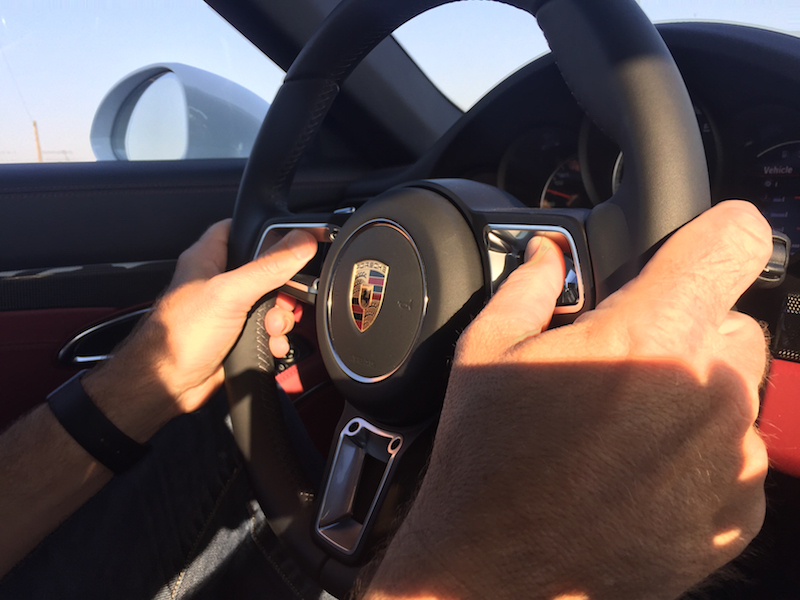
As with the original 930, there’s still some work to do. Rear tire noise is ridiculous on certain types of pavement, an annoyance that prompted one journalist to suggest active noise cancellation be considered as a fix. Good idea. The rear tires are so loud, in fact, that tire noise is bothersome at times with both windows down. Yes, as in, you can hear the rear tires behind you over the wind noise. Fortunately, that only happened on very open aggregate, or roughly 5-10% of the time we spent behind the wheel. (You might want to try a test drive on the roads you ply regularly.) You might notice we haven’t complained about the car’s size. Yes, it’s still a 991 and it’s still a bit big—but it no longer feels it. We suspect credit for that goes to refinements in the damping and rear-wheel steering, but the changes do the trick. In the nits department, the standard steering wheel looks great, but its black inserts creak if you wiggle your thumbs in them. Solution: Don’t wiggle your thumbs in them. And, good as the new PCM 4 infotainment system is—and that’s brilliant—the navigation desperately needs a big “I don’t want to turn around button” or a middle-finger icon for those times you know a better way, or think you do. Like when we wanted to keep going on a superior route through the Bay Area to avoid traffic.
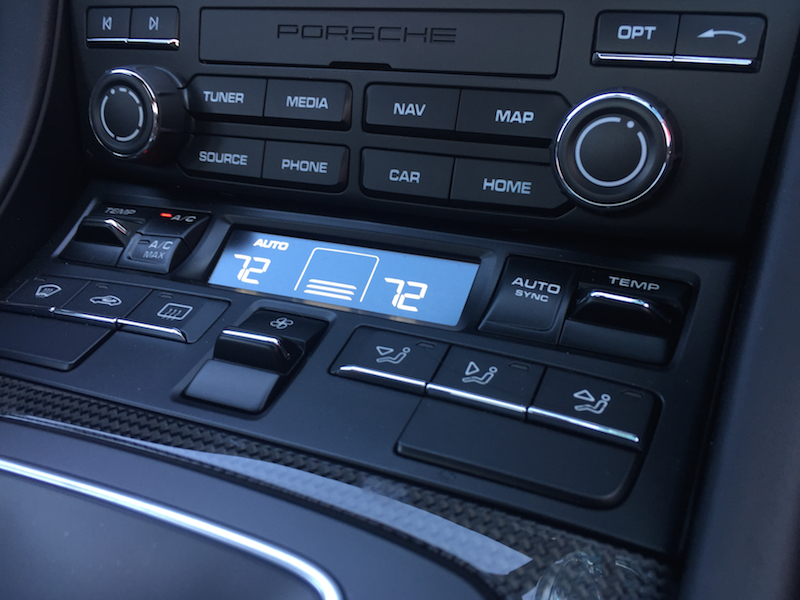
Blank place holders where the heated seats should be…
Finally, one 911 Turbo S Cabriolet we tried had plastic blanks where the heated seat buttons would go. Seriously? In a $201,450 car? Turns out heated seats are a no-cost option. They should be mandatory. While the first owner may not care about them, the second or third owner will be bummed about not having them, especially in a Cabriolet.
7. You aren’t, either.
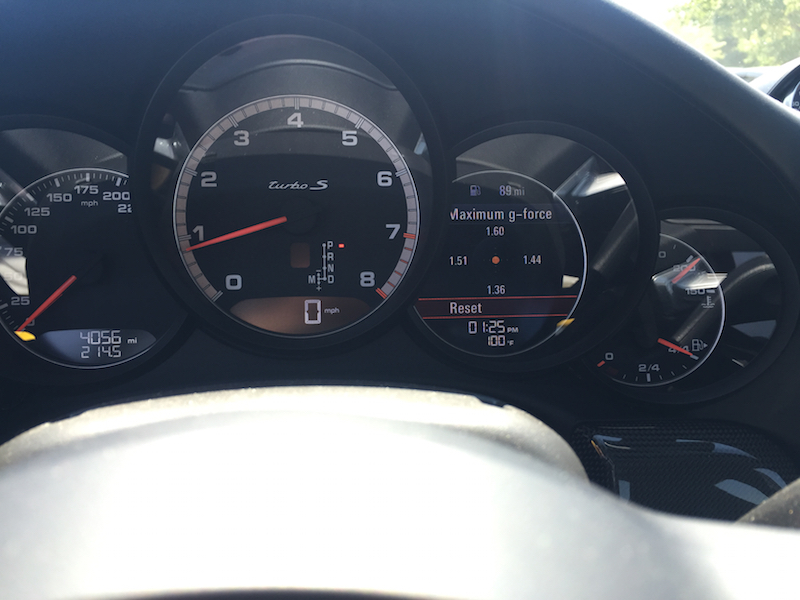
Check out those “g-force” readings. This 911 Turbo S gave its all.
The truth is most 911 Turbo customers will never be Hurley Haywood. (Most 911 GT3/RS customers won’t be, either, but that’s another story.) In the hands of mere mortals—and we include ourselves in that tally—we suspect the Turbo or Turbo S may be faster than the GT3 or GT3 RS. Yes, the Turbo has a lot of safety nets and may even be too easy to drive at 8/10ths. But is the fact that the Turbo and Turbo S are more approachable with a bigger margin for error a bad thing, especially for drivers who go to the track 2-3 times per year? We think not. And take it from us: It’s still plenty demanding and entertaining at 9/10ths or 10/10ths.
8. The Turbo still does everything well.
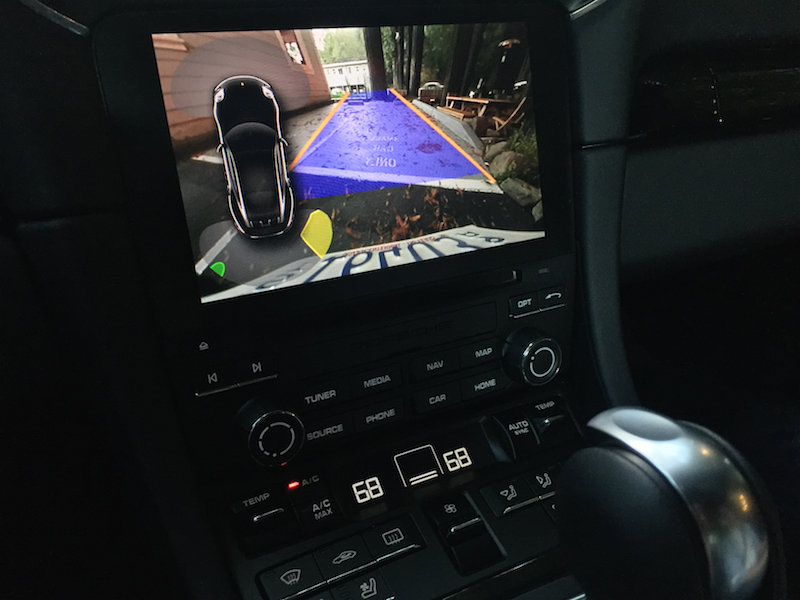
More ground clearance means the 911 Turbo can deal with more driveways and more dips with greater ease—and a GT3-style nose-lift system is now available as an option if you need even more clearance. Want air-conditioned seats? A convertible top? A sunroof, or moonroof? An interior color other than black? More audio system options? Okay, so none of those things are “hardcore,” but some of them are pretty nice to have in a street car. And unlike some cars in Porsche’s lineup, you don’t need any options. Porsche equips the 911 Turbo as a loaded car, with a full-leather interior, Sport Chrono, and much more. We spent a week with a standard 2017 911 Turbo with no substantive options and never felt like we were missing out on anything—even the base model feels like a kitchen sink car.
9. It has back seats.
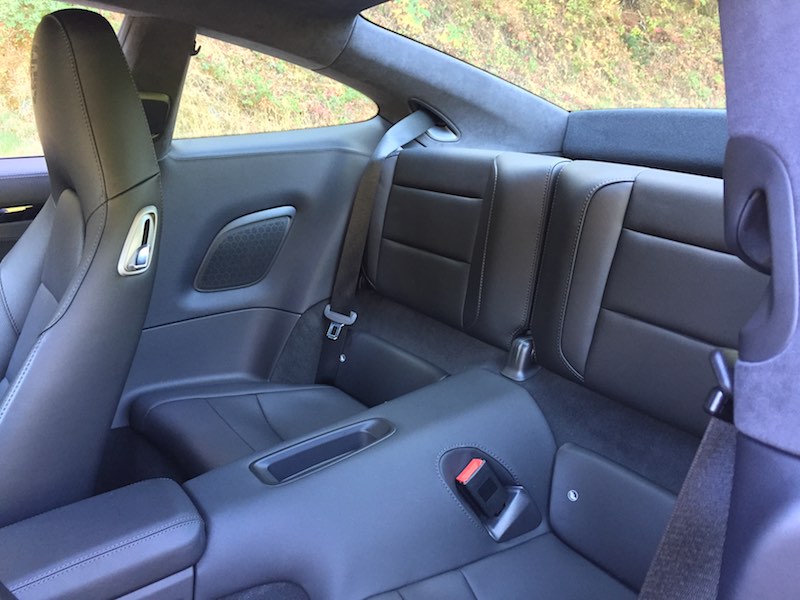
Okay, they’re small. But children fit right in back there—and that fact makes this 911 a viable daily driver as well as an automotive outreach device for parents, grandparents, and anyone who knows someone with small and impressionable kids. What’s not to like about that? Save our hobby!
